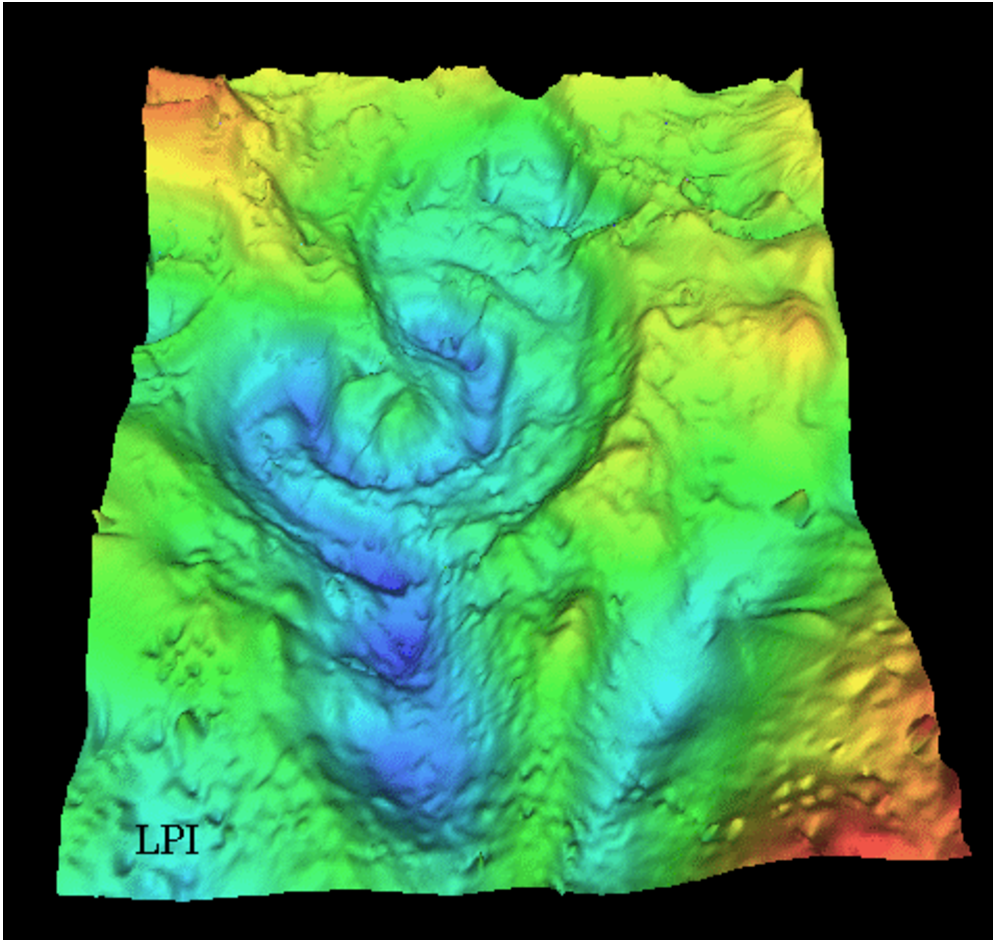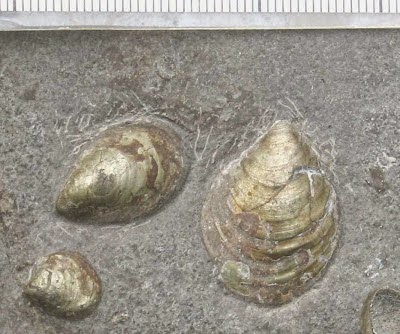One of the two main theories that seeks to explain the extinction
event at the end of the Cretaceous postulates that a large bolide
(extra-terrestrial object such as a comet or asteroid) smashed into the Yucatan Peninsula
in Mexico
close to the modern town of Chicxulub, resulting in a devastating explosion and
long term climate change. Such an event would have led to a ‘nuclear winter’ as
large amounts of material thrown up into the atmosphere significantly reduced
the amount of sunlight reaching the planets surface, leading to a breakdown in
food chains and causing the mass extinction event.
Such an event would have a profound impact on plant survival
strategies, as darker skies would lead to a much shorter growing season,
favouring deciduous plants over evergreens. It is difficult to tell directly
from the fossil record whether a plant was deciduous or evergreen in nature,
though deciduous plants on the whole have lower leaf mass per area (high leaf
mass requires higher carbon investment) and higher vein densities (which aids
carbon assimilation), so comparison of these two measures across an ecosystem
should give some indication as to whether it was dominated by deciduous or
evergreen forms.
In a paper published in the journal PLoS Biology on 16 September
2014, a team of scientists led by Benjamin Blonder of the Department of Ecologyand Evolutionary Biology at the University of Arizona and the Rocky MountainBiological Laboratory in Gothic, Colorado, describe the results of an analysis
of fossil leaves from the Hell Creek and Fort Union formations in southwestern
North Dakota, which cover a 2.2 million year section across the Cretaceous/Palaeocene
boundary (the last 1.4 million years of the Cretaceous and first 800 000 years
of the Palaeocene).
Blonder et al. found that
the leaf mass per area of leaves in the study dropped by an average of 6 grams
of dry leaf mass per meter squared across the Cretaceous/Palaeocene boundary,
while vein density rose by 1.1 mm of vein per mm2 of leaf area
across the boundary. These are small values across the total range of
variability found in modern plants, but consistent with a change in ecosystem
from (for example) tropical rainforest to tropical deciduous forest.
Visual representations of trait changes across the
Cretaceous/Palaeocene Boundary. Top row, increase in vein density as seen in
(A), ‘‘Dryophyllum’’subfalcatum,230.7
m stratigraphic depth, vein density = 2.5 mm-1 and (B)
unknownnonmonocot (morphospecies FU87), 1.275 m depth, VD = 5.3 mm-1.Bottom
row, decreases in leaf mass per area as seen through decreasing petiole width
forsimilar leaf area in (C) ‘‘Ficus’’planicostata,
23.6 m depth, leaf mass per area = 136 g m-2and (D) ‘‘Populus’’nebrascensis, 7.2 m depth, leaf
mass per area = 48 g m-2. Scale bars,(A and B) 500 mm and (C and D),
5 mm. Blonder et al. (2014).
These variables have been shown to change across the
Cretaceous/Palaeocene boundary before, but over longer periods and over wider
areas. By producing a study of a much shorter time-span over a limited area,
Blonder et al. hope to provide
evidence for a much faster change in ecosystem than was previously possible.
They note that a drop in leaf mass per area and rise in vein density could also
be caused by a drop in atmospheric carbon dioxide, which is a probable symptom
of the other main theoretical cause of the End Cretaceous Extinction Event, the
extensive volcanism associated with the formation of the Deccan Traps flood
basalts in India.
However such volcanism would be more likely to cause a long-term drop in
atmospheric carbon dioxide, leading to a gradual change in leaf mass per area
and vein density, where as the study supports an abrupt change in variables,
harder to explain though a change in atmospheric chemistry, unless this was
more sudden than could be explained by our current understanding of flood
volcanism.
See also…
The Earth has been dominated by multi-cellular life forms (animals...
 The nature of the Chicxulub impactor. 65 million years ago, at the end of the Cretaceous, the Earth underwent
the last of the five great mass extinctions recorded in the fossil
record. While this is by no means the largest of these events, it is the
most familiar to the general public, as it was responsible for the
extinction of, amongst other things, the non-Avian Dinosaurs and the
large marine Reptiles of...
The nature of the Chicxulub impactor. 65 million years ago, at the end of the Cretaceous, the Earth underwent
the last of the five great mass extinctions recorded in the fossil
record. While this is by no means the largest of these events, it is the
most familiar to the general public, as it was responsible for the
extinction of, amongst other things, the non-Avian Dinosaurs and the
large marine Reptiles of... Opportunistic Bivalves during the Early Jurassic Toarcian Oceanic Anoxic Event. The Toarcian Oceanic Anoxic Event is an extinction event that took place
in the Early Jurassic, about 183 million years ago. It took place in
four phases, thought to have been related to Milankovitch Cycles. During
each phase the temperature of the global ocean is thought to have risen
abruptly by as much as 13℃, leading to a...
Opportunistic Bivalves during the Early Jurassic Toarcian Oceanic Anoxic Event. The Toarcian Oceanic Anoxic Event is an extinction event that took place
in the Early Jurassic, about 183 million years ago. It took place in
four phases, thought to have been related to Milankovitch Cycles. During
each phase the temperature of the global ocean is thought to have risen
abruptly by as much as 13℃, leading to a...
Follow Sciency Thoughts on Facebook.


